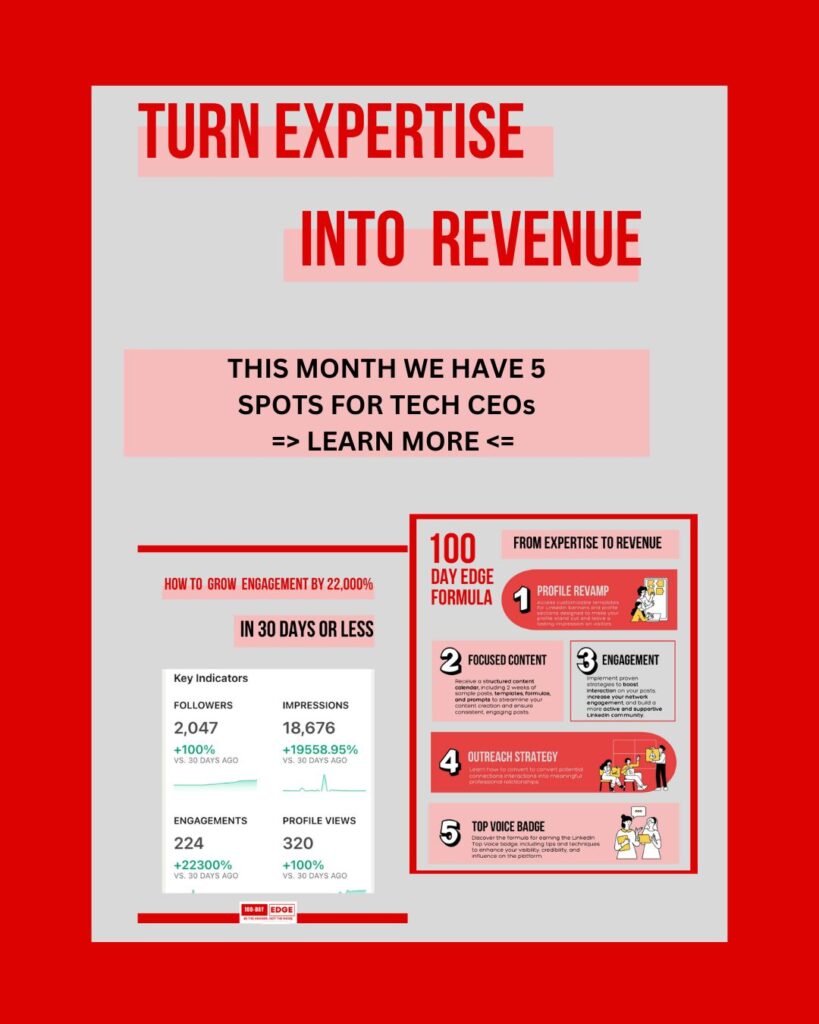Let’s face it: the old-school approach of hiring an SEO agency just to stuff keywords into blog posts isn’t cutting it anymore.
The SEO landscape has transformed, and what used to work last year has become obsolete.
These days, effective SEO goes beyond simply sprinkling keywords throughout your content. It’s about showcasing your technical authority, genuinely engaging your audience, and crafting material that aligns seamlessly with user intent.
Think of it as reflecting the sophistication of your product in your content.
Your potential customers aren’t just browsing for products; they’re actively seeking solutions to specific problems. They come equipped with knowledge and can quickly spot the difference between generic marketing fluff and authentic technical expertise.
This means that the companies thriving in SEO aren’t necessarily those with the biggest budgets. Instead, they are the ones that truly understand their technical strengths and use them to create content that offers real value.
Consider these stats:
- 67% of enterprise B2B purchases begin with a search. This underscores just how crucial it is to be visible when potential customers are looking for solutions.
- Technical content holds users’ attention for 50% longer than general content. When your content engages readers, it signals to search engines that your material is worth their time.
- 23% of B2B tech searches lead to featured snippets. These snippets can significantly boost your traffic, but only if your content is structured to capture them.
Take a moment to audit the featured snippets of your top five competitors.
What questions are they answering that you could tackle more effectively?
Tap into insights from your engineering team; they can provide the depth and nuance that can elevate your content strategy. By doing this, you’ll not only enhance your visibility but also position yourself as a thought leader in your field.
Table of Contents
Toggle1. Align SEO with User Intent
Let’s talk about how your product analytics can unlock some serious insights for your content strategy.
You’ve spent a ton of time tracking how users interact with your product, analyzing which features they use, and diving into support tickets.
With Google’s AI getting smarter every day, that data is more valuable than ever.
Google no longer just slapping a ranking on pages based on keywords. It is now understanding and summarizing content that really answers user questions.
So, if you can create content that aligns with the actual needs and queries of your audience, you’ll have a much better shot at ranking higher in search results.
Here’s how your product analytics can help with content strategy:
- User Problems: Get a handle on the specific challenges your users are facing. This is your chance to create content that speaks directly to their pain points.
- Terminology: Pay attention to the language they use when talking about their challenges. This insight can really sharpen your keyword strategy and make your content hit home.
- Journey Friction Points: Identify where users are getting stuck in their experience. By addressing these hurdles in your content, you can help guide them through more smoothly.
- Effective Solutions: Figure out which features are making the biggest impact for your users. This knowledge can inspire engaging case studies or best practice content that showcases your product’s strengths.
All this user behavior data isn’t just a nice bonus; it’s a roadmap for creating content that Google will see as authoritative and relevant.
While your competitors might be guessing what users want based on keyword tools, you have the real scoop from your analytics.
We encourage all of our tech clients to set up up a monthly meeting between their product analytics team and their content team.
Together, we discover new opportunities to create content that genuinely addresses what users are looking for, helping them stand out in a competitive landscape.content teams to connect insights and refine your content strategy.
This collaboration uncovers opportunities for creating content that directly addresses user needs and enhances your SEO efforts.
2. Prioritize Content Depth: Quality Over Quantity
Many marketing agencies promise to deliver “thought leadership” content.
When we look closely at their technical posts, wel often find a pattern of surface-level insights wrapped in buzzwords.
Google has also recognized this trend and is now actively filtering out shallow content in favor of more comprehensive, detailed articles.
What Google Wants in Technical Content:
- Detailed Explanations: Provide in-depth technical insights that show a thorough understanding of the subject matter.
- Implementation Data: Include real performance metrics and specific implementation details to back up your claims.
- Evidence of Experience: Highlight case studies or examples from your engineering team that demonstrate hands-on experience.
Instead of generic topics like “10 Tips for Better DevOps,” we focus on creating content that showcases actual problem-solving capabilities.
For instance, writing about “How We Reduced Deploy Times by 68% by Refactoring CI/CD Pipeline” with actual data and detailed steps resonated much more with our client’s audience. It resulted in 17% increase in leads. It also included higher engagement rates and more backlinks from other tech companies.
So if you are trying to replicate this success, consider establishing a “Tech Insights” channel on Slack. Your engineers can share breakthroughs and best practices. Encourage your content team to turn these real technical insights into in-depth articles that meet Google’s depth requirements.
3. Optimize Content Structure for AI Summarization
Some companies consistently rank at the top for high-value technical searches, even though their product may not be the best.
In many cases it’s not by accident. High-ranking technical content follows a specific pattern that aligns with how technical decision-makers approach problems. It is structured for the AI summarization feature.
Search engines are now advanced enough to recognize effective content structure and its correlation with user satisfaction. When your content structure mirrors the thought processes of your target audience, you naturally improve your chances of ranking higher.
Key Components of a High-Ranking Technical Article:
- Problem Definition: Start with a clear definition of the problem, providing real technical context.
- Current Solutions Analysis: Offer an analysis of existing solutions in the market, discussing their pros and cons.
- Technical Approach Deep Dive: Dive into your unique technical approach, detailing the implementation process.
- Implementation Considerations: Discuss practical considerations for implementing your solution, such as resource allocation and potential challenges.
- Performance Metrics: Share real-world metrics that validate your approach.
- Future Scalability: Address future considerations and how your solution can scale.
Example of Best Practices: Leading tech companies like Stripe, AWS, and MongoDB follow this structure in their content. This alignment with how engineers and decision-makers think not only enhances the user experience but also boosts SEO performance.
Conduct an audit of your top 10 content pieces to see if they follow this structure. If not, consider revising them to better meet both user and search engine expectations.
4. Focus on Meaningful Engagement Metrics
Let’s be honest: generic traffic numbers don’t reflect the success of SEO for technical B2B companies. Your board doesn’t care about high-level traffic; they want to know if SEO is driving qualified leads, establishing technical credibility, and improving your market position.
Unfortunately, many SEO tools focus on metrics that are more relevant to e-commerce or media sites. Instead, you need a different set of metrics that align with how technical buyers discover and evaluate solutions. These metrics should track visibility, quality, and impact of your technical content.
Meaningful Metrics to Track:
- Organic Traffic to High-Intent Pages: Monitor traffic to pages like pricing, documentation, and enterprise solutions to see if you’re reaching potential customers at critical decision-making moments.
- Technical Content Engagement Rates: Measure how users interact with your technical content, including time on page and shares.
- Signups for Developer Tools from Organic Search: Assess whether your content is converting visitors into users of your products.
- Enterprise Demo Requests from Content: Track how many demo requests come as a result of specific content pieces.
- GitHub Star Correlation with Organic Traffic: Understand how engagement on your GitHub projects relates to traffic and visibility.
Set up a dashboard to track these specific metrics. Review them monthly with your marketing team to ensure you’re focused on what truly matters for your business growth.
5. Repurpose Existing Technical Documentation
One of the most underutilized resources in tech companies is the documentation created by developers in GitHub. This technical content can drive significant organic traffic when optimized for SEO.
Content to Leverage:
- README Files: Improve these to better explain the functionality and use cases of your products.
- Architecture Decision Records: These documents can showcase the thought process behind your design choices and innovations.
- Troubleshooting Guides: Well-written guides can attract users searching for solutions to common problems.
- Performance Optimization Notes: Share insights into how you improved your systems or processes.
Success Story: When HashiCorp began publishing their internal architecture decisions and detailed documentation, they experienced an 82% increase in organic traffic to their technical content within just six months. This illustrates the power of repurposing existing documentation into SEO-friendly formats.
Quick Win: Ask your engineering team to flag interesting discussions and insights from GitHub that the content team can transform into articles or blog posts.
6. Implement a Systematic SEO Process
Just as you have CI/CD processes for your product development, it’s crucial to establish systematic processes for SEO.
The companies leading in technical SEO have built robust systems for identifying, creating, and optimizing technical content.
Key Components of an SEO Process:
- Technical Content Review Process: Regularly assess your content to ensure it aligns with current SEO best practices and user needs.
- Regular Content Performance Audits: Periodically review how existing content performs to identify opportunities for updates or enhancements.
- Automated Competitive Content Monitoring: Set up alerts to track competitors’ content strategies and performance.
- Content Update Triggers: Create a system for updating content based on product changes, ensuring your content remains relevant.
- SEO Impact Analysis in Decision Making: Incorporate SEO considerations into product development and marketing strategies.
Assign an engineering lead to review your content processes and identify automation opportunities.

This month, my team is helping 5 technology leaders transform their expertise into tangible business results.
In 100 days, you’ll:
- Stage 1: Define your EDGE and optimize your online presence.
- Stage 2: Engage your tribe and land your first high-value client.
- Stage 3: Set your EDGE on fire with strategic content and recurring revenue.
Technical SEO FAQ for B2B Tech Companies
In today’s rapidly evolving digital landscape, SEO for tech companies looks dramatically different than it did just a few years ago. Let’s explore the most pressing questions about technical SEO and how to leverage it effectively for your B2B tech company.
Q1: How has SEO changed for B2B tech companies?
Modern SEO has evolved into something far more sophisticated, especially for tech companies. Today’s search engines are incredibly smart—they can understand context, evaluate technical depth, and assess how well content actually serves user needs.
The new playbook requires:
- Demonstrating genuine technical authority
- Creating truly engaging content that resonates with your audience
- Aligning your content with sophisticated user intent
- Providing real value beyond surface-level explanations
Q2: How can we use product analytics to improve SEO?
Your product analytics are a goldmine of SEO insights waiting to be tapped. By leveraging user behavior data, you can transform your content strategy in several powerful ways:
- Identify and address specific user pain points through targeted content
- Adopt the exact language your users use, making your keyword strategy more authentic and effective
- Smooth out friction points in the user journey through strategic content placement
- Create content that highlights your most impactful features based on actual usage data
Pro tip: Set up regular syncs between your product and content teams to ensure these insights are continuously feeding into your SEO strategy.
Q3: What does Google look for in high-quality technical content?
Google has become increasingly sophisticated in evaluating technical content. Here’s what rises to the top:
- Detailed technical explanations that demonstrate deep subject matter expertise
- Real implementation data and performance metrics that validate your claims
- Case studies and examples from your engineering team that show hands-on experience
- Clear, practical solutions to specific technical challenges
Q4: How can we optimize content structure for AI summarization?
As AI tools become more prevalent in content discovery, structuring your content for both human readers and AI summarization is crucial. Here’s a framework that works:
- Problem Definition
- Start with a clear, technical context
- Define the challenge precisely
- Solution Analysis
- Evaluate existing approaches
- Present pros and cons objectively
- Technical Deep Dive
- Detail your unique approach
- Outline implementation steps
- Practical Considerations
- Address resource requirements
- Discuss potential challenges
- Performance Validation
- Share real-world metrics
- Provide concrete results
- Future-Proofing
- Discuss scalability
- Address potential evolution
Q5: What are the most meaningful engagement metrics for technical B2B SEO?
Instead of getting lost in vanity metrics, focus on indicators that truly matter for technical B2B content:
- Organic traffic to high-intent pages (pricing, documentation, enterprise solutions)
- Engagement rates with technical content (time on page, shares)
- Developer tool signups originating from organic search
- Enterprise demo requests triggered by specific content pieces
- Correlation between GitHub stars and organic traffic
Q6: How can we leverage existing technical documentation for SEO?
Your technical documentation is a treasure trove of SEO potential. Here’s how to maximize it:
- Transform README files into comprehensive product guides
- Convert architecture decision records into insightful blog posts
- Create SEO-optimized troubleshooting guides from support documentation
- Develop performance optimization guides based on internal notes
Pro tip: Create a systematic process for regularly reviewing and updating technical documentation to maintain SEO value.
Q7: How can we implement a systematic SEO process for our tech company?
Building a robust SEO system requires:
Technical Content Management:
- Regular content reviews for SEO alignment
- Performance audits to identify improvement opportunities
- Automated competitive monitoring
- Content update triggers based on product changes
Strategic Integration:
- SEO consideration in product development
- Regular impact analysis of content performance
- Systematic approach to content optimization
Q8: How can we involve our engineering team in the SEO process?
Success in technical SEO requires strong collaboration between engineering and marketing teams:
- Create a dedicated tech insights channel (e.g., Slack) for sharing breakthroughs
- Assign engineering leads to review content for technical accuracy
- Schedule regular sync meetings between product analytics and content teams
- Build automated processes for capturing and sharing technical insights
Remember: Your engineering team’s expertise is invaluable for creating authentic, technically accurate content that resonates with your audience.
Creating effective SEO content for B2B tech companies is no longer about gaming the system—it’s about creating genuine value through technical expertise, data-driven insights, and systematic processes. Start by implementing one or two of these strategies and build from there.
How are you adapting your SEO strategy to meet the evolving needs of technical B2B audiences? Share your experiences in the comments below.









